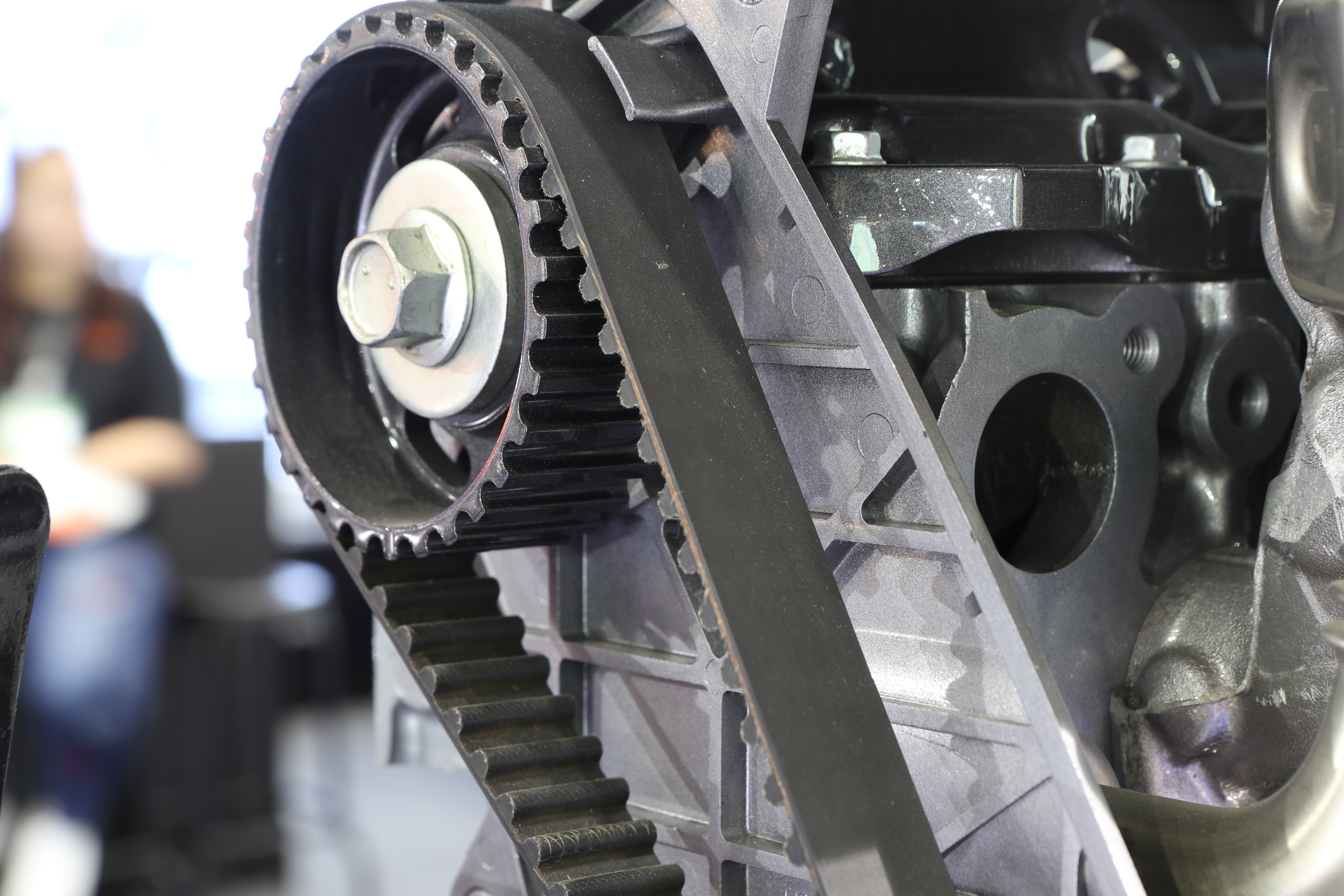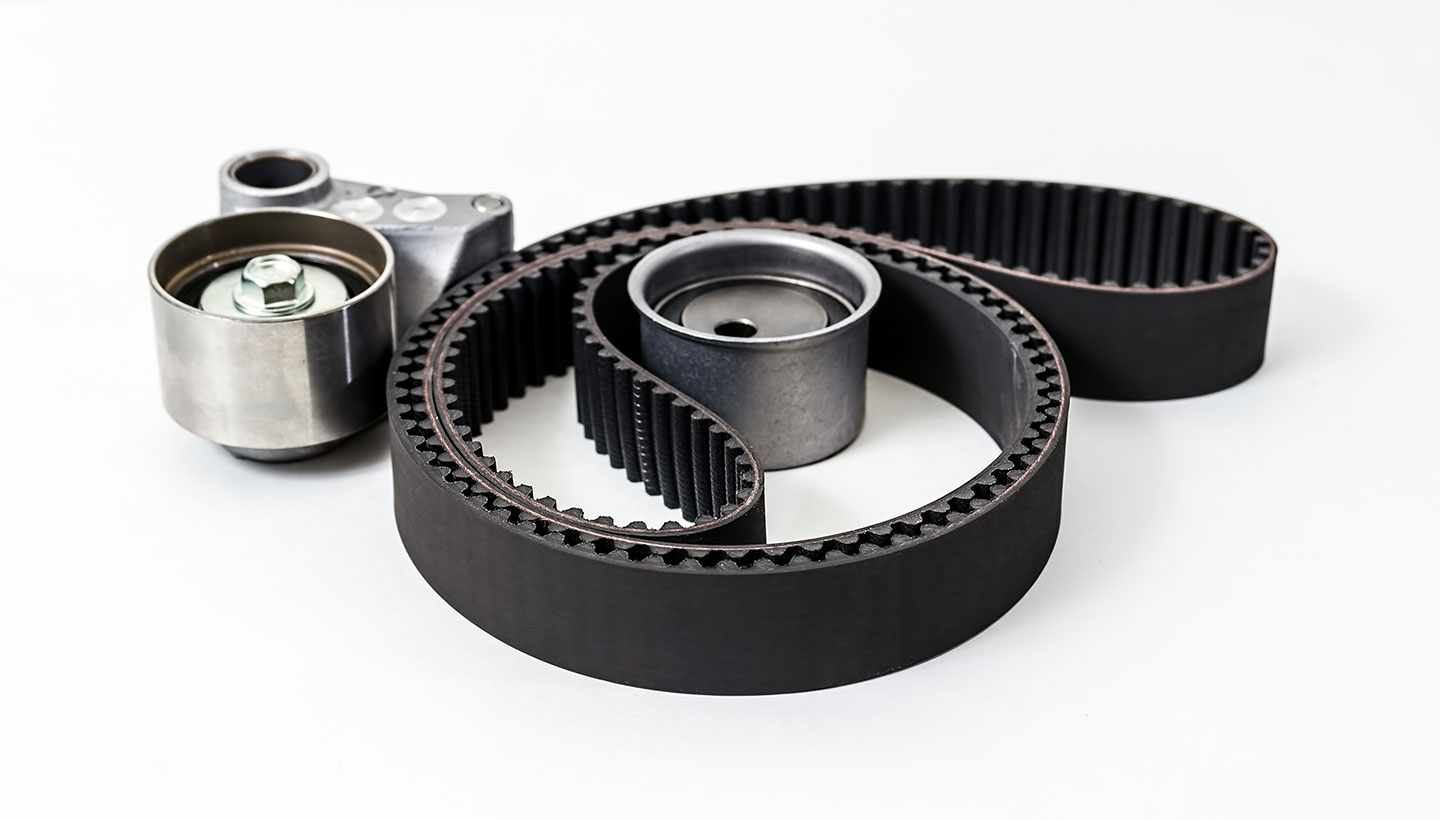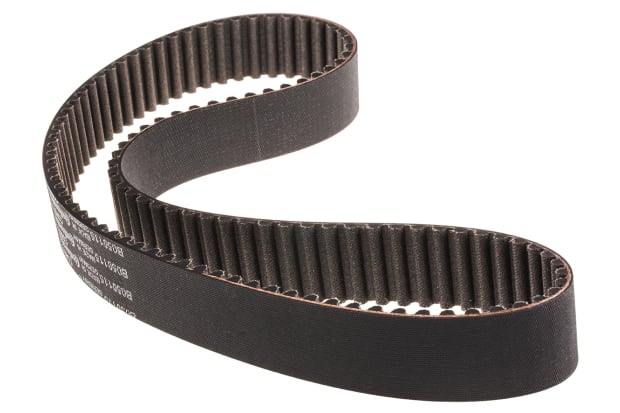Product Description
| TYPE | Pitch P | Tooth angle | Tooth height hg | Belt thickness H |
| MXL | 2.032 | 40 | 0.51 | 1.14 |
| XL | 5.08 | 1.27 | 2.30 | |
| L | 9.525 | 1.91 | 3.60 | |
| H | 12.7 | 2.29 | 4.36 | |
| XH | 22.225 | 6.35 | 11.20 | |
| XXH | 31.75 | 9.53 | 15.70 |
| TYPE | Pitch P | Tooth angle | Tooth height hg | Belt thickness H |
| T2.5 | 2.5 | 40 | 0.70 | 1.30 |
| T5 | 5 | 1.20 | 2.20 | |
| T10 | 10 | 2.50 | 4.50 | |
| T20 | 20 | 5.00 | 8.00 |
| TYPE | Pitch P | Tooth angle | Tooth height hg | Belt thickness H |
| AT3 | 3 | 50 | 1.10 | 1.90 |
| AT5 | 5 | 1.20 | 2.70 | |
| AT10 | 10 | 2.50 | 4.50 | |
| AT20 | 20 | 5.00 | 8.00 |
| TYPE | Pitch P | Tooth height hg | Belt thickness H |
| 3M | 3 | 1.20 | 2.40 |
| 5M | 5 | 2.20 | 3.70 |
| 8M | 8 | 3.60 | 6.43 |
| 14M | 14 | 6.43 | 10.00 |
| 20M | 20 | 8.40 | 13.20 |
| TYPE | Pitch P | Tooth height hg | Belt thickness H |
| S2M | 2 | 0.76 | 1.36 |
| S3M | 3 | 1.14 | 1.90 |
| S5M | 5 | 1.85 | 3.35 |
| S8M | 8 | 3.05 | 5.30 |
| S14M | 14 | 5.30 | 10.00 |
| TYPE | Pitch P | Tooth height hg | Belt thickness H |
| P2M | 2 | 0.73 | 1.30 |
| P3M | 3 | 1.15 | 2.40 |
| P5M | 5 | 2.00 | 3.80 |
| P8M | 8 | 3.60 | 5.60 |
| P14M | 14 | 6.43 | 10.00 |
| Pitch | Pitch P | Tooth height hg | Belt thickness H |
| DT5 | 5 | 1.20 | 3.40 |
| DT10 | 10 | 2.50 | 7.00 |
| DAT5 | 5 | 1.20 | 3.90 |
| DAT10 | 10 | 2.50 | 7.00 |
| DHTD5M | 5 | 2.10 | 5.80 |
| DHTD8M | 8 | 3.48 | 9.00 |
| DL | 9.525 | 1.90 | 5.50 |
| DH | 12.7 | 2.29 | 6.60 |
Packing&Delivery:
We will use film to wrap the machine. then put into wooden box.
The normal package is wooden box.(Fumigation treatment).
Our Service:
Pre-sales Service
* Inquiry and consulting support.
* Sample testing support.
* Welcome view our Factory.
After-sales
*Teaching video to show how to work.
*Machine introduction word to show how to work.
Warranty
*Machines are new (or unused) and the guarantee period will be given 12 months from shipment date.
During this period, the seller will provide free maintenance and free spare parts that caused by the machine’s quality.
Parts damaged because of HangZhoudling and consumable parts are not covered by any warranty.
*All our machines have CE certificates and passed ISO9001-2008
HoloBelt Machines Collocation Solutions
Total solution is how we define Holobelt company. From design, engineering, manufacturing and training,
Holo provides a total workshop solution to our customers helping to give them a competitive advantage in the marketplace.
Workshop Show:
*Conveyor Belt Cutting Slitting Machine
*Conveyor Belt Ply Separator Splitting Machine
*Conveyor Belt Punching Finger Machine
*Conveyor Belt cooled hot press splicing Machine
*Conveyor Belt Welding Machine
*Conveyor Belt Vulcansied Machine
*PU PVC Rubber Conveyor Belt for sell
Contact infos!
Name:Rosa Chen
Facebook, Linkedin, Skype, Whatsapp, Wechat is online!
Any questions pls feel free to contact me!
| Type: | Toothed Belt |
|---|---|
| Material: | PU, Rubber |
| Feature: | Oil-Resistant, Acid And Alkali Resistant, Tear-Resistant, Heat-Resistant, Cold-Resistant, Wear-Resistant |
| Customization: |
Available
| Customized Request |
|---|
.shipping-cost-tm .tm-status-off{background: none;padding:0;color: #1470cc}
|
Shipping Cost:
Estimated freight per unit. |
about shipping cost and estimated delivery time. |
|---|
| Payment Method: |
|
|---|---|
|
Initial Payment Full Payment |
| Currency: | US$ |
|---|
| Return&refunds: | You can apply for a refund up to 30 days after receipt of the products. |
|---|
Can you explain the benefits of using V-belt tensioners in preventing slippage and optimizing power transmission in machinery?
Using V-belt tensioners in machinery offers several benefits in preventing slippage and optimizing power transmission. By maintaining proper belt tension, minimizing belt slippage, and ensuring consistent power transfer, tensioners contribute to improved efficiency, reduced energy losses, and enhanced overall performance. Here’s a detailed explanation of the benefits of using V-belt tensioners:
- Prevention of Belt Slippage:
- Optimized Power Transmission:
- Improved Efficiency:
- Reduced Wear and Maintenance:
- Enhanced System Reliability:
V-belt tensioners play a critical role in preventing belt slippage in machinery. Belt slippage occurs when the belt slips on the pulleys, resulting in a loss of power transmission efficiency and decreased performance. Tensioners apply the appropriate tension to the V-belt, ensuring a positive grip between the belt and the pulleys. This minimizes or eliminates slippage, allowing for efficient power transfer from the driving pulley to the driven pulley.
Proper tensioning provided by V-belt tensioners optimizes power transmission in machinery. When the V-belt is properly tensioned, it maintains a consistent contact area with the pulleys, maximizing the frictional grip. This efficient power transfer ensures that the input power from the driving pulley is effectively transmitted to the driven pulley, minimizing energy losses and maximizing the overall system efficiency.
By preventing slippage and ensuring optimal power transmission, V-belt tensioners contribute to improved efficiency in machinery. Slippage leads to energy losses, as power is wasted in overcoming the slipping motion instead of being transferred to the driven components. Tensioners maintain the necessary tension in the V-belt, reducing slippage and maximizing power transfer efficiency. This results in improved overall system efficiency, reduced energy consumption, and cost savings over time.
V-belt tensioners help reduce wear on the V-belts and associated components, leading to reduced maintenance requirements. Proper tensioning minimizes belt movement and excessive wear, extending the lifespan of the belts. By preventing slippage, tensioners also reduce the risk of belt damage, such as excessive heat generation or premature wear due to friction. This results in longer belt life, fewer replacements, and reduced maintenance costs for the machinery.
Using V-belt tensioners enhances the reliability of machinery by ensuring consistent power transmission. When the V-belts are properly tensioned, the risk of unexpected belt slippage or failure is significantly reduced. Reliable power transmission minimizes downtime, production interruptions, and the associated costs. Tensioners play a crucial role in maintaining the required tension in the belts, contributing to the overall reliability and uninterrupted operation of the machinery.
In summary, the benefits of using V-belt tensioners in preventing slippage and optimizing power transmission in machinery include the prevention of belt slippage, optimized power transfer efficiency, improved overall system efficiency, reduced wear and maintenance, and enhanced system reliability. By properly tensioning the V-belts, tensioners ensure efficient power transmission, reduce energy losses, and extend the lifespan of the belts, resulting in improved performance and cost savings for machinery applications.
Can you provide guidance on selecting and sizing V-belt tensioners for specific V-belt applications?
Yes, selecting and sizing V-belt tensioners for specific V-belt applications requires careful consideration of various factors. Here’s a detailed guidance on how to select and size V-belt tensioners:
- Understand the Application Requirements:
- Determine the Tensioning Force:
- Consider Belt Type and Size:
- Assess Space Constraints and Mounting Options:
- Consider Environmental Factors:
- Consult Manufacturer Specifications and Guidelines:
- Consider Maintenance and Serviceability:
- Consider Cost and Long-Term Value:
Begin by understanding the specific requirements of the V-belt application. Consider factors such as the power transmission requirements, load conditions, operating speed, and environmental conditions. This information will help determine the appropriate tension force and other specifications needed for the tensioner.
Calculate the required tensioning force for the V-belt system. The tensioning force depends on factors such as the power being transmitted, the coefficient of friction between the belt and pulleys, and the belt’s characteristics. Manufacturers typically provide tension force guidelines based on belt type and application. Ensure that the selected tensioner can provide the required tensioning force within the desired operating range.
Take into account the type and size of the V-belt being used. Different belt types, such as classical V-belts, narrow V-belts, or synchronous belts, have specific design and performance characteristics. The tensioner should be compatible with the chosen belt type and size. Consider factors such as belt width, profile dimensions, and load capacity when selecting the tensioner.
Evaluate the available space and mounting options in the application. The tensioner should be sized to fit within the available space and align properly with the pulleys. Consider factors such as the tensioner’s dimensions, mounting configurations (e.g., fixed, adjustable, spring-loaded), and accessibility for installation and maintenance.
Take into account the environmental conditions in which the V-belt system will operate. Factors such as temperature extremes, humidity, dust, and chemical exposure can impact the performance and longevity of the tensioner. Select a tensioner that is designed to withstand the specific environmental conditions of the application.
Refer to the manufacturer’s specifications and guidelines for the tensioner. Manufacturers often provide detailed information on tensioner selection, including tension force ranges, belt compatibility, operating limits, and installation instructions. Consult these resources to ensure the chosen tensioner meets the application requirements and aligns with industry standards.
Evaluate the tensioner’s maintenance and serviceability requirements. Consider factors such as the ease of tension adjustment, access for inspection and maintenance, and the availability of replacement parts. A tensioner that is easy to maintain and service can contribute to the longevity and reliability of the V-belt system.
Finally, consider the cost and long-term value of the tensioner. Evaluate factors such as the initial purchase cost, expected lifespan, and the overall value provided by the tensioner in terms of performance, reliability, and maintenance requirements. While it’s important to consider budget constraints, prioritize selecting a tensioner that meets the application requirements and offers long-term value rather than solely focusing on the upfront cost.
By following these guidelines and considering the specific requirements of the V-belt application, you can select and size V-belt tensioners that are well-suited for the intended use. Remember to consult manufacturers’ specifications and guidelines for detailed information and to ensure proper integration and optimal performance of the tensioner within the V-belt system.
Can you explain the significance of proper tensioning in V-belt-driven machinery and equipment?
Proper tensioning plays a significant role in V-belt-driven machinery and equipment. It is crucial for ensuring efficient power transmission, preventing slippage, and maximizing the performance and reliability of the V-belt system. Here’s a detailed explanation of the significance of proper tensioning in V-belt-driven machinery and equipment:
- Efficient Power Transmission:
- Preventing Slippage:
- Extending Belt Life:
- Reducing Maintenance and Downtime:
- Enhancing System Reliability:
Proper tensioning is essential for efficient power transmission in V-belt-driven systems. When the V-belt is properly tensioned, it maintains a firm grip on the pulleys, allowing for effective transfer of rotational energy from the driving pulley to the driven components. The correct tension ensures that power is transmitted without slippage, minimizing energy losses and maximizing the system’s efficiency. By maintaining proper tension, V-belt-driven machinery and equipment can achieve optimal power transfer and operate at their intended speeds and performance levels.
One of the primary purposes of proper tensioning is to prevent slippage between the V-belt and the pulleys. Slippage can occur when the tension in the V-belt is inadequate or when the belt is subjected to excessive loads. Insufficient tension or overloading can cause the belt to lose traction with the pulleys, resulting in reduced power transmission, decreased efficiency, and potential damage to the belt and other system components. Proper tensioning ensures that the V-belt remains tightly engaged with the pulleys, preventing slippage and maintaining reliable power transmission.
Proper tensioning is essential for extending the life of the V-belt. When a V-belt is under excessive tension, it can experience accelerated wear and premature failure due to increased stress on the belt and the pulleys. On the other hand, insufficient tension can lead to belt vibration, excessive flexing, and localized wear, reducing the belt’s lifespan. By maintaining the correct tension, V-belt-driven machinery and equipment can minimize wear, distribute the load evenly across the belt and pulleys, and promote optimal belt life. Proper tensioning contributes to reducing maintenance costs and downtime associated with belt replacement.
Proper tensioning helps reduce maintenance requirements and downtime in V-belt-driven systems. When the V-belt is under the correct tension, it operates smoothly without slippage or excessive wear. This minimizes the need for frequent adjustments, re-tensioning, and belt replacements. By maintaining the proper tension, V-belt-driven machinery and equipment can operate reliably, with reduced risks of unexpected belt failures or performance issues. Proper tensioning contributes to increased system uptime, improved productivity, and reduced maintenance costs.
Proper tensioning enhances the overall reliability of V-belt-driven machinery and equipment. When the V-belt is correctly tensioned, it operates within its designed parameters, ensuring that the system components are subjected to the appropriate forces and loads. This reduces the risk of belt slippage, excessive wear, and premature component failure. By promoting reliable power transmission, minimizing the potential for system malfunctions, and extending the lifespan of the V-belt and other system components, proper tensioning contributes to the overall reliability and longevity of V-belt-driven machinery and equipment.
In summary, proper tensioning is of significant importance in V-belt-driven machinery and equipment. It ensures efficient power transmission, prevents slippage, extends the life of the V-belt, reduces maintenance requirements and downtime, and enhances the overall reliability of the system. By maintaining the correct tension, V-belt-driven machinery and equipment can achieve optimal performance, maximize energy efficiency, and minimize the risks of belt failure or system malfunctions.
editor by CX 2023-12-12




